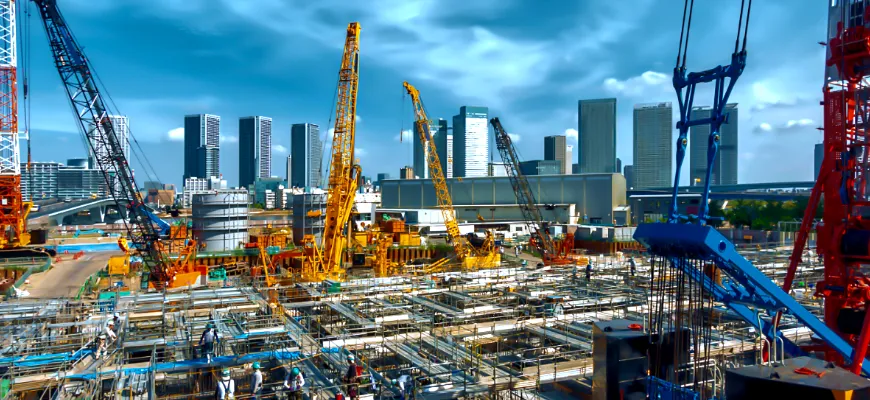
The effects of growing energy prices on households and all occupations are widely known.
According to Ofgem, gas and electricity rates have risen 500%. The building sector is a significant energy consumer, accounting for almost 3% of the UK’s total energy consumption.
Given the energy-intensive nature of buildings, the industry is expected to be significantly impacted by such large rises in energy prices.
This blog examines how the energy crisis affects the building sector and suggests steps to reduce future risks.
Impact of Rising Costs
Increased Demand For Renewable Energy Sources
The need for renewable energy sources and technology, like solar panels, is probably going to increase as commercial building managers and homeowners look for innovative ways to power their facilities.
Additionally, providers like AR Power anticipate a rise in demand for these tools since the UK government eliminated VAT on Tesla Powerwall battery storage on February 1.
As a result, these amenities might be more prevalent in newly constructed homes and will continue to be a popular option for homeowners wishing to update their homes.
Energy Costs Put Pressure On Project Budgets
Transportation Costs Will Lead To Amended Material Use
Overall construction costs are rising due to rising fuel and raw material prices, including steel, concrete, and timber, in addition to direct electricity pricing.
Because of this, certain projects are becoming less feasible financially, or contractors and developers are being forced to look for new ways to cut costs. This could entail purchasing from nearby businesses or locating less costly substitutes for bulkier or more costly materials. Short-term cost savings may result from this, but longer-term problems and a decline in project quality may follow.
Ongoing Market Uncertainty
Economic restrictions brought on by growing energy prices have created major uncertainty in almost every market, and the construction industry is no exception. As construction companies try to weather the storm and meet building targets while simultaneously guaranteeing profitability for long-term success, there will probably be even more uncertainty in 2024.
Although industry insiders believe that the construction market will rebound in 2024, projects may be hampered, especially in the early months of the year, by the uncertainty surrounding energy costs and the growing expense of powering sites.
There is still time for things to alter because the year is only getting started. Nonetheless, these are our forecasts regarding the impact of consistently rising energy costs on the building industry in 2024.
Which Areas of Construction Will be Affected the Most?

Big Construction Projects
Rising energy prices will undoubtedly have an effect on projects that are completed on a larger scale and over a longer time frame.
Since construction companies must predict risk and expenses over a longer time horizon, rising energy prices might threaten a project’s financial sustainability and must be taken into account at the beginning.
This covers building projects that take place over longer periods. These projects are also more likely to bear the burden of any unexpected price increases for the same reason.
The impact will be more severe in some sectors of the building industry than others.
SME and Subcontractors
Since most small-scale construction companies and subcontractors have fixed-term contracts, they are more likely to be affected in the near future by rising energy costs. This implies that any cost increases will need to be covered, further taxing these companies.
We may see higher tender prices for major construction projects in the long run as energy costs rise along the supply chain.
Tendered Contracts
Tender prices for major building projects are rising as energy costs propagate through the supply chain.
After a record 7.5% increase in 2021, Mace Cost Consultancy predicted that tender costs will grow by 8% in 2022. Rising energy prices, along with increased labour and raw material costs, will be the main drivers of this.
As clients try to reduce their exposure to growing costs, these tendencies may cause a slowdown in the number of construction projects being offered.
Additional Challenges for the Construction Industry
Construction Insolvencies

Over the past 12 months, the construction industry has had a number of setbacks, the most recent of which is the rise in energy expenses. Construction companies have had to contend with supply chain difficulties, increased raw material costs, and a more competitive job market.
As smaller businesses find it difficult to handle the increased expenses, rising energy prices are only putting more strain on the construction sector and may result in a rise in building insolvencies.
Contracts Unable to be Delivered
Increase in Material Costs
Energy Surcharges on Supply Chain
Another contributing cause to rising material costs is the transmission of energy surcharges across the supply chain. These levies would intensify the strain already placed on construction companies by rising prices.
These charges have already begun to be passed on by businesses such as Tarmac Buxton Lime, and more are anticipated to follow.
Impact on Decarbonisation Plans
Conclusion
The construction industry is dealing with a confluence of factors, including reduced contract margins, the elimination of the red diesel exemption, and rising energy costs.
Notwithstanding these challenges, the construction industry may benefit from a number of recent developments. The latest government study shows that the sector’s problems are acknowledged, and it gives some hope that help will be available soon.
In the long run, the current situation may spur innovation in the industry as businesses search for more affordable and sustainable energy sources. Long-term, this might result in a more effective and environmentally friendly construction sector.




